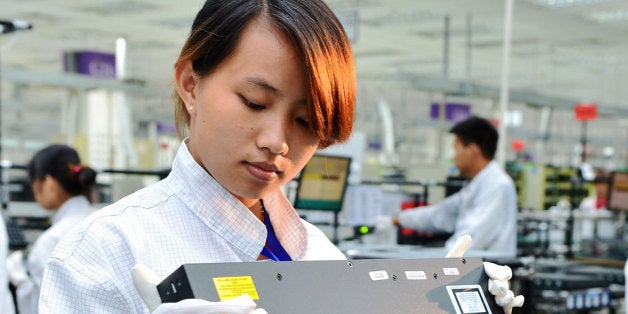
H&M, Gap, Puma, Starbucks, Coca-Cola, and Disney. What do all these companies have in common? Yes, they're a part of our lives through the clothes we wear, the beverages we drink, and the toys our kids love. But they also have something else in common. They belong to a group of companies talking about the topic of transparency.
This week in New York, these companies and dozens more are gathering to discuss the themes of "Transparency & Transformation," convened by non-profit Business for Social Responsibility (BSR). In the lead-up to the event, BSR and Toronto-based sustainability market research firm Globescan polled over 700 professionals on hot social and environmental issues that companies are facing.
Only 19 percent of respondents believe the public has a high level of trust in business, according to the recent State of Sustainable Business Survey 2014. So there's clearly a lot of work to do. Hopefully, when asked about possible solutions to this problem, 61 percent of people suggested increased transparency as a way to build trust.
What does transparency mean to you? It means different things to different people. To Merriam Webster, it means "characterized by visibility or accessibility of information, especially concerning business practices." It comes from the Latin "to show oneself." In The Circle, by Dave Eggers, transparency is taken to the extreme when the female protagonist and various politicians "go transparent" by wearing a mini-camera that broadcasts their every move 24 hours a day.
What does it mean "to show oneself" when applied to the companies whose products we love? Are we talking about disclosing product ingredients, more visibility into manufacturing practices, political contributions or diversity statistics?
To us, transparency means making people visible and giving them a voice. Not just the people who design and sell products, but the people who manufacture them. Think about the clothes you're wearing, the device you're reading on and what you had for breakfast. Think of the hundreds of hands that went into making and growing those essentials for you.
What if we could see their faces, hear their voices, and know what their lives are like? Could it be overwhelming? Definitely. But consider the alternative. When workers are invisible, they can be subjected to horrific conditions -- sexual harassment, exposure to toxic chemicals and working in a building so unsafe that it is at risk of catching fire or collapsing, as happened last year in Bangladesh.
Being able to shine a light on workplaces that were previously invisible to us is incredibly powerful. Imagine if the workers at Rana Plaza were not invisible. If they had had a direct line to decision-makers, they might have reported the cracks in the walls and prevented the building from falling.
Of course transparency is not the goal for its own sake. It is a means to an end, and that end is driving better lives for people. Human rights (70 percent) and workers' rights (64 percent) were chosen by State of Sustainable Business Survey respondents as the top two sustainability priorities for companies.
In our own work, we've found that proactive transparency can be a catalyst for positive change in the area of workers' rights. Our Labor Link mobile survey tool has uncovered child labor, boosted livelihoods, and enabled workers to open a bank account for the first time.
Last week at the Ethical Trading Initiative (ETI) in London, four American and UK-based companies shared their experiences taking steps toward a more transparent supply chain. Eileen Fisher and Marks & Spencer are two of the companies using mobile phones to connect directly with workers making their products. The event "Worker Voice: What Are We Learning from Mobiles?" also featured companies like Vodafone, Boden and Primark sharing their experiences using mobile for supply chain transparency.
Marks & Spencer has used mobile to poll 64,230 workers across 46 manufacturing locations in five countries -- China, India, Bangladesh, Sri Lanka and the UK. The anonymous channel allows workers to report on sensitive issues like harassment and bullying. And the granular data enables M&S to go beyond basic auditing to engage in a new kind of conversation with suppliers.
H&M CEO Karl-Johan Persson says his company is working towards "total transparency" through to end consumers, so shoppers "will easily be able to track, trace, and benchmark how sustainably their product has been made."
What will transparency look like in five years? It's impossible to say. At the London event, one mobile expert speculated that it won't be long before factory workers are posting on the Facebook pages of companies whose products they make.
Transparency is not the end. It is the means. Our end goal is more ethical and sustainable manufacturing of what we wear and eat, and the devices we use to communicate. Transparency is one of the ways we can achieve it. By plugging workers in to the conversation, companies not only build trust, they bring light to places that have been invisible for too long.
Find us at the BSR Conference or follow Labor Link on Twitter @GoodWorldTech for news on transparency and workers around the world.
Good World Solutions is a partner of Cisco CSR. Cisco sponsors The Huffington Post's ImpactX section.